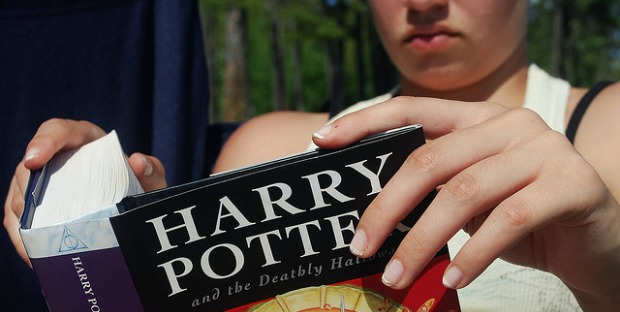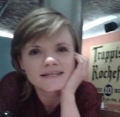You have no items in your cart. Want to get some nice things?
Go shopping
“There are still, if you can believe it, still occasions where I get patronised by adult writers for writing for young people. You know? Where you tell them you write for children, and they say, “Good for you.”
It’s about that point where I say that yeah, we have to struggle on and make do with merely outselling adult writers twenty-five to one. It’s a burden.
Because we’ve got the best readers, don’t we? The way they talk about books on social media. The way they’re passionately dedicated to the characters – just think of JK Rowling when she mentioned Hermione and Ron. Teen readers are almost cult-like in their devotion to books they see as their own.”
Patrick Ness, introducing the Imagine Festival 2014
Most aspiring writers dream of being successful, some of becoming the next big thing and writing the novel everyone will talk about. I’ve spoken to various writers while researching this series and many young adult fiction writers simply want to bridge the gap of understanding. Young adult fiction presents the issues and experiences that children go through, it makes the events of a novel relatable to them and to their world. But this purpose jars against the ongoing battle of what is, and what is not, appropriate for children.
From the very beginning of young adult fiction – from The Outsiders and Chocolate War through to Junk and Noughts and Crosses – there has been ongoing debate on content, theme and central issues, in addition to continued discussion on style and presentation. All this culminates in is the consideration that young adult fiction, as it is known today, is not considered to be ‘real’ fiction.
In the BBC series Faulks on Fiction, aired in February 2011, author Martin Amis, famous for making controversial comments, said: “People ask me if I ever thought of writing a children’s book, [and] I say, ‘If I had a serious brain injury I might well write a children’s book’ but… I would never write about someone that forced me to write at a lower register than what I can write.” Amis’s comments sparked outcry among children’s writers, with Lucy Coats and Jane Stemp speaking out. In an article in The Guardian from 11 February 2011, Coats emphasised the unique qualities that children present as young readers: “Children are astute observers of tone – they loathe adults who patronise them with a passion, adults who somehow assume they are not sentient beings because they are children.”
The very idea of ‘writing down’ to a young readership goes against every guideline there is for children’s and young adult writers. While Amis may consider the notion of knowingly writing for children as anathema, the ability to write big ideas of love, life and death to an ever-changing audience – an audience with such varying degrees of awareness and experience – takes some cleverness.
With Chaos Walking, and subsequent works A Monster Calls and More Than This, Patrick Ness is an example of authors rising to the challenge unintentionally made by Amis. From the first novel, The Knife of Never Letting Go, the reader meets Toby knowing nothing about life beyond his town and its people. But as the novel goes on, Toby learns the pain of loss, the value of friendship and the importance of love as he turns from a boy into a man. Chaos Walking is much more than a coming of age tale – it can be said that this occurs simply because he gets older as the story progresses – but what changes him are the experiences he goes through and the decisions he must make to survive. Chaos Walking is written in an internal monologue from a number of perspectives, offering readers a literary style that has grown in popularity and taken on a life of its own. For a series that was originally published for younger readers under 12 years, every recommendation I have heard for these novels has come from an adult.
Be it stylistically, narratively or figuratively, there is what can only be described as a snobbishness when discussing certain works of fiction. Yale professor and book critic Harold Bloom is the perfect example of that high literary world, looking down on more popular fiction for the sole reason that it is popular, a temporary distraction from the ‘real’ literature of Austen, Dickens and Dostoevsky. Adult literary fiction is not about inclusiveness. Only a handful of people understanding a novel means you’re special; if you don’t understand, you aren’t special. So encouraging younger readers to read more popular fiction – what is sometimes called ‘easy reading’ – is to not only limit intelligence but restrict thinking, keeping it within simple constructs, thoughts and ideas, fuelling the ongoing debate regarding quality in popular young adult fiction.
In 2000, when Harry Potter mania was beginning its inexorable climb up the publishing record lists and leaving a lasting mark on children’s and young adult fiction, Bloom called J K Rowling’s prose style ‘heavy on cliché’ and claimed that it ‘makes no demands upon her readers’. While attempting to criticise some 35 million book buyers and possibly the author herself, instead Bloom showed he has missed the very point and purpose of children’s and young adult fiction. Popular fictions or sensationalist writing isn’t a separate category from ‘literature’ – it’s all about getting children to read more. The best writers can tell entertaining stories, and young adult fiction writers aim to entertain while including and addressing real life issues. With his award-winning Dark Materials trilogy, Philip Pullman has proved that young adult fiction can be classed as literature. The second novel in the series, The Amber Spyglass, was longlisted for The Man Booker Prize, making Pullman the first ever young adult fiction writer to be listed.
Nowadays YA has more general associations with popular fiction, and this is considered by some to include bad writing. What is missed are some brilliant nuggets that haven’t become famous, such as The Love Curse of the Rumbaughs by Jack Gantos, or Henry Tumour by Anthony McGowan. What is particularly noticeable within YA are the landscapes in fantasy and dystopian action, a recurring theme over recent years with Twilight and The Hunger Games and also in Veronica Roth’s bestselling series, Divergent. Despite the taboo associations of these genres, they are in no way apologetic for what they are and they hold firm with complex galleries of characters, allowing for page-turning and pacey novels. There is something to be said for those who can convincingly create a new world and characters that exist for a reader beyond the page. When writing a three-part series similar to Meyer, Collins and Roth, a writer has to do more than have a good story. They have to weave a complex narrative with a key story that plays out in each novel while still contributing to the series. This can be harder than it sounds. The very idea that there are no limits to YA is what makes it more challenging to the writer and for the reader.
Young adult fiction opens doors to reading and to the imagination. For the reader it is limitless, without boundaries. For wider audiences, it can be a question of quality and content in style, narrative and form. While some prefer Austen, Dickens and Dostoevsky – each fantastic writers in their own way – young adult novels that Harold Bloom would consider to be ‘easier reads’ open a door to the possible imaginations in younger minds that otherwise might be lost. In a similar way to Jackson Pollock’s Full Fathom Five contrasting with the walls of the Sistine Chapel, there are characteristics to recommend both the classical and the more abstract modern. The beauty of it is that we are each left to make up our own minds.

About Eleanor Pender
An avid film and literature fan, Eleanor has knowledge ranging from Charles Dickens to Rian Johnson. She has reviewed film, theatre, TV and books since 2008 in alternative e-zine, Push To Fire to Edinburgh Festival Fringe paper, ThreeWeeks. She has lived in Durham, Liverpool, Manchester, Edinburgh and Bristol. She is currently working on her first young adult fiction novel.




